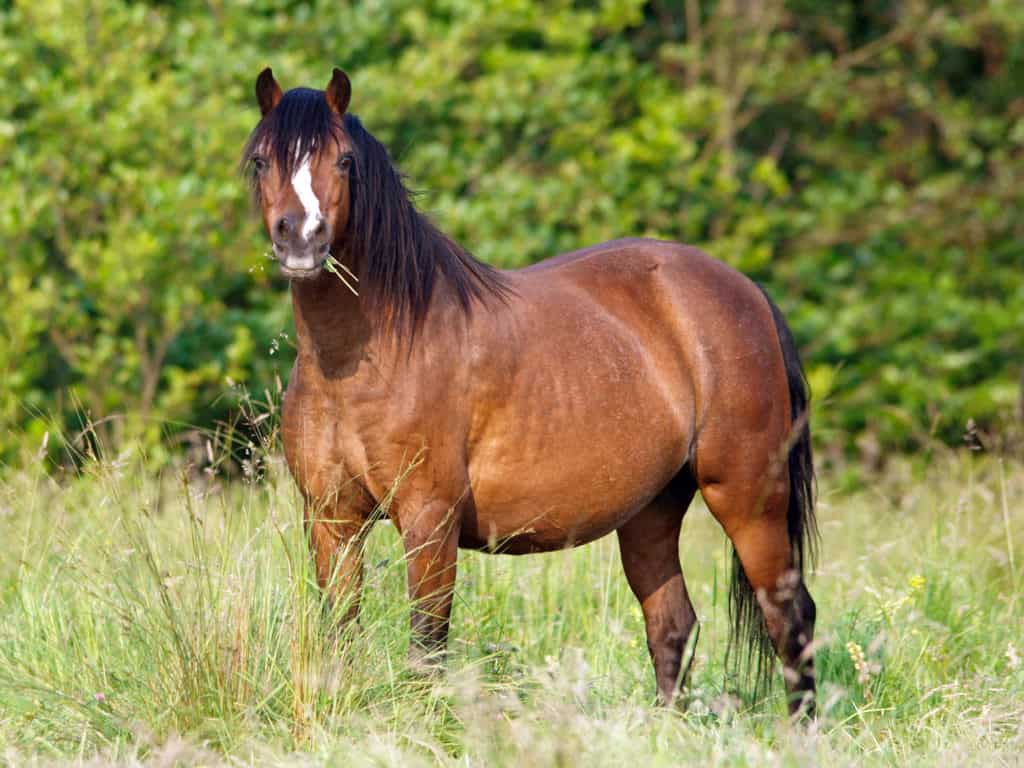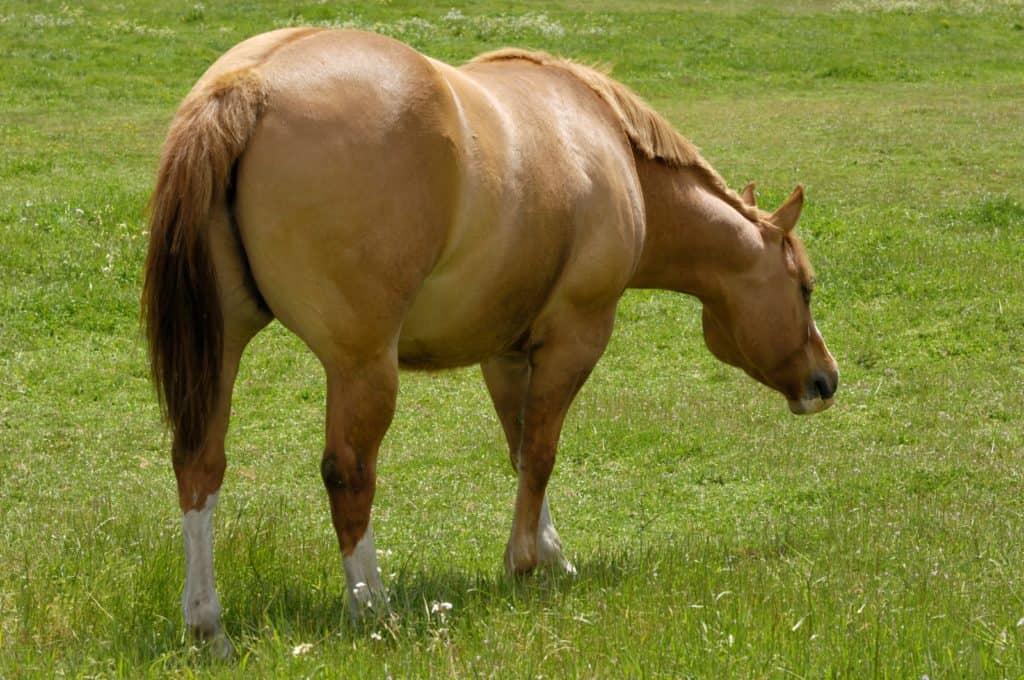
Reduce Endocrinopathic Laminitis Likelihood With Nutrition, Medications
Consider these dietary changes to help reduce the laminitis risk and discuss with your veterinarian whether certain medications could help your horse.
Laminitis (commonly called “founder”) affects an estimated 7-14% of the world’s equine population. It’s the inflammation of the tiny, interwoven lamellae that attach a horse’s hoof to the underlying coffin bone (third phalanx, or P3) and support the horse’s entire body weight. Anything that impacts the integrity of the lamellae, such as inflammation, weakens their hold. This causes the coffin bone to displace within the hoof capsule and move toward the ground. The condition is very painful and is often life-threatening to horses.
The same disease has several different causes, which include:

Consider these dietary changes to help reduce the laminitis risk and discuss with your veterinarian whether certain medications could help your horse.

Researchers are working to help owners find ways to help their horses lose weight no matter their circumstances–from boarding facility set up issues to unsound horses that can’t be exercised.

Drs. Peter Morresey and James McLeod share regenerative medicine insights from clinical and research perspectives.

Researchers identified a link between glucose and insulin concentrations (measured using an oral glucose test) and risk and onset of laminitis.

Do horses with PPID, EMS, and/or IR have a greater laminitis risk after receiving joint injections? Drs. Vern Dryden and Amanda Adams respond.

Since Barbaro’s death due to supporting-limb laminitis more than a decade ago, researchers have made great strides in understanding it, why it develops, how to treat it, and more.

With proper diagnostics, correct treatment, and careful management, many horses can overcome laminitis complications.

Learn what distinguishes PPID, EMS, and IR from each other and how to care for “metabolic” horses.

Improve your knowledge about diagnosing, treating, and preventing equine metabolic syndrome (EMS).

Learn more about nutrition’s role in the development and management of equine endocrine disorders and how you can reduce your horse’s risk of developing a secondary disease.

Advances in how vets manage sepsis, as well as incorporating preventive strategies for laminitis, are leading to improved outcomes.

Vets must look comprehensively at the clinical picture to not only diagnose the disease but also come up with a treatment plan and prognosis.

Researchers hope to find out as they conduct a study of U.K. horse owners’ understanding of laminitis.

Veterinarians could be able to use this baseline data to identify prelaminitic changes in Arabian horses.

Articles on laminitis, colic, hoof abscesses, licking and chewing, and wound care are among the most-read in 2017.
During this year’s lecture, farrier Daisy Bicking and Dr. Nick Frank will present on laminitis and endocrine disorders.
Stay on top of the most recent Horse Health news with
"*" indicates required fields